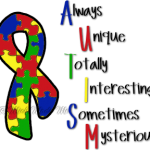What does this term mean? Mentally retarded (MR); meaning a persistent, global delay in cognitive development. The degree of MR will vary in CMD and CMyD. As a general rule all patients with the congenital form will have a lower IQ than the parents and possibly mental retardation. Some or most other forms of Myotonic Dystrophy will have a lower IQ than what would be predicted from their family background but will not approach the level of MR. This is sometimes a very difficult aspects for families to accept. The reason for this is not known at this time.
The IQ levels of Children with Congenital Muscular Dystrophy is lower than affected peers. The Roig study showed a 24.5 drop in IQ between the mother and her child. THE WISC (Wochler Intelligence Scale for Children) shows a mean verbal IQ of 56 and a performance IQ of 47.7.Recent Study by Kobayashi showed of 50 patients with MP-CMD 4 had IQ under 80 all the rest showed no sign of mental retardation. Thus, the incidence of mental retardation with the Merosin Positive Type of CMD seems lower than other types. FCMD patients usually have marked mental retardation with an IQ usually below 50. The underlying cause for MR is probably of multiple origins. Most of the MR is present from birth there is no global evidence of intellectual deterioration in children with CMD. It is unlikely that the MR is due solely to anoxia (Lack of Oxygen) during birth although this could be a contributing cause.
Most likely the significant part of MR is due to the underlying cerebral abnormality due to the Myotonic Dystrophy Gene or the Maternal factor that seems to be acting in the congenital form. Information from Brain scans show that enlargement of the ventricles (spaces within the brain) this may be a contributing factor. Infants with CMD also have a high frequency of Intraventricular hemorrhage. Thus MR probably is the result of multiple causes.
Here is the result of one study. the study indicates that changes in the brain alone do not entirely explain the lower IQ or mental retardation that occurs:
The Brain Involvement in Congenital Myotonic Dystrophy: a Review
Carlo P. Trevisan and Francesco Martinello
Dipartimento di Scienze Neurologiche e Psichiatriche, Universita’ di Padova, Padova, Italy
The congenital variant of Myotonic Dystrophy (CMyD) is transmitted by the affected mothers to children with the CMyD gene, in the region q13.3 of chromosome 19, carrying a CTG repeat length larger than 1000. We reviewed the brain abnormalities reported to date in series of cases with Congenital CMyD and compared them with our data on patients affected by the same disease. Studies of molecular genetics on cases with Congenital CMyD were also considered. In our experience and as seen in recent reports, evaluation of intellectual ability in such children clearly indicates that mental retardation of mild or moderate degree affects almost all the patients with the disease. At the neuroimaging evaluation (CT or MRI) the vast majority of them have also been shown to be affected by central white matter changes and ventricular enlargement, usually not of severe degree. Correlation among the degree of mental retardation, the ventricular enlargement and the white matter changes seems lacking. In our experience, it seems inconsistent also the relationship between the size of the CTG repeat expansion in peripheral blood cells DNA and the degree of the clinical and neuroimaging alterations presented by children with Congenital CMyD, even though all showing a trinucleotide expansion larger than 1000. Altogether, the congenital variant of the Steinert’s disease appears as a myoencephalopathy of the newborn, that is only partially explained by the characteristic large trinucleotide expansion on chromosome 19q13.3.
Key words: congenital myotonic dystrophy, CTG repeat expansion, mental retardation, brain MRI, review.
Basic Appl. Myol. 7 (5): 339-344, 1997
Prof. Carlo P. Trevisan, Clinica Neurologica II, Università di Padova, Via Vendramini, 7, 35137 Padova, Italy.
So what does this all mean to you a parent or teacher? The IQ level will be affected so the person will not be as smart as they would have been without the disease. In some cases this will be quite severe. In others not as severe.
In any case right now there is no treatment. This is probably one of the hardest things for parents or people who have the disease to accept. After some struggle this fact will be accepted and life will go on. And we will struggle to make the best of this difficult circumstance.




